ROBERT Allenby, Stuart Appleby, Adam Scott and Jason Day hold the honour of winning the Australian Boys’ Amateur Championship. They share the common trait of being outstanding teenage golfers who made the transition into becoming stars on the US PGA Tour. From humble beginnings, they are now all ranked in the top 50 in Career Earnings on the US PGA Tour: Scott is ranked 10th with earnings of $US38.3 million, Appleby is 23rd ($28.9m), Allenby is 30th ($27.3m) and Day is 47th ($20.2m).
But for every Allenby, Appleby, Scott and Day who fulfils a dream and carves out a career on golf’s biggest tour, there are literally hundreds – thousands – of aspiring golfers who don’t make the grade. For various reasons they didn’t have ‘the right stuff’.
Then there are the special ones – golfers with inordinate amounts of talent who threatened to set the world on fire. It’s these ‘Can’t Miss Kids’ – the ones who promised so much and delivered so little – that are a conundrum. They teased us with their talent and left us wondering what they might achieve in golf.
Numerous elite amateurs never scaled the heights of professional golf. Just before Allenby and Appleby announced themselves, a young Queenslander by the name of Stuart Bouvier signalled he was one to watch after winning the 1987 Australian Boys’ and 1988 Australian Amateur championships.
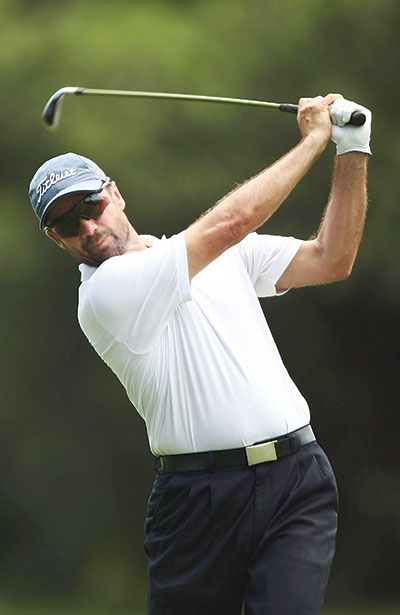
Mark Wuersching was another. He succeeded Scott as Australian Boys’ champion in 2000. Last year he was caddieing on the LPGA Tour for Cristie Kerr. And there was the deliciously-named Eagle Chang, who prevented Day from defending his Australian Boys’ title by beating him on the first hole of a playoff in 2005.
Shane Tait was a two-time Australian Schoolboys champion (1985 and 1987) who never quite made the most of his talent. Some people regarded the Queenslander as the best 16-year-old golfer they ever saw. Jason Dawes was another name on people’s lips in the mid-1990s. The Victorian once shot 62 in the 1994 French Amateur championship, breaking Nick Faldo’s course record at The National Golf Club in Paris.
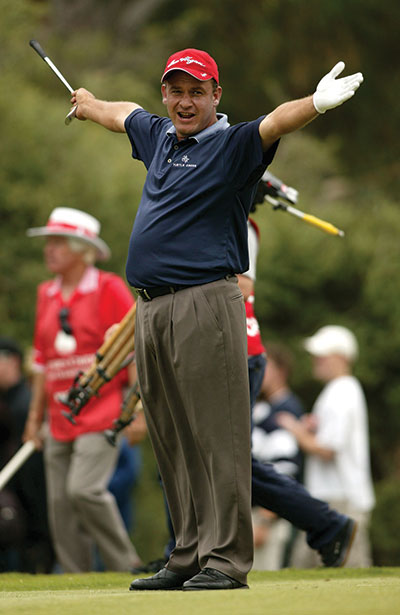
It’s tempting to say Andrew Buckle missed the cut. The Queensland prodigy first came to our attention as a two-time World Junior champion (1999 and 2000). Buckle won the 2001 Australian Amateur and captured the 2002 Queensland Open in his first professional start. He disappeared into Asia for a few years and emerged to win his first pro event in America (the 2006 Virginia Beach Open on the Web.com Tour) and graduate onto the US PGA Tour. Buckle lost his card the following year despite finishing fourth behind Tiger Woods at the Buick Invitational in just his third event. Today, the 32-year-old is battling an elbow injury and now caddies for fellow Australian Steve Allan on the Web.com Tour.
Buckle merely goes down as an underachiever. The same could be said for Michael Sim, Won Joon Lee and Scott Arnold who all scaled the summit of amateur golf to be ranked No.1 in the world. They haven’t quite established themselves in the US or Europe.
Expectations were high, too, for Nick Flanagan the 2003 US Amateur champion. Like Sim, Flanagan dominated the Web.com Tour but struggled on the US PGA Tour. Matthew Giles, the 2006 World Junior champion, is another who has been stuck on the secondary American tour.
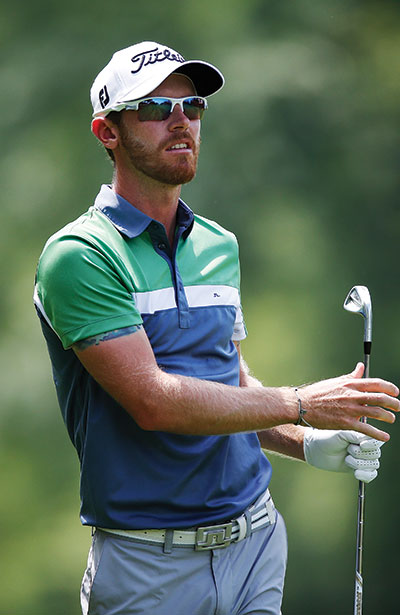
when he dominated the Web.com Tour.
Australia last claimed the biennial World Amateur Teams Championship in The Philippines in 1996. We took home the coveted Eisenhower Trophy and the four-man team of Jamie Crow, David Gleeson, Jarrod Moseley and Brett Partridge were paraded at that year’s Australian Open in Sydney.
Just two of the four made the cut in the professional ranks. Moseley enjoyed a relatively successful career, winning the 1999 Heineken Classic and the controversial 2002 Australian PGA Championship (which he shared with Peter Lonard). He spent seven full seasons on the European Tour.
Gleeson gets a tick. Just. The boy from Dalby in the Darling Downs found some success, and love, in Asia where he won tournaments in China, Macau and India. He now lives with his Taiwanese wife in Taipei. Gleeson was prodigiously talented. It’s believed he considered becoming a concert pianist instead of a pro golfer.
I recall playing a social round with Gleeson and the British wordsmith Ian Wooldridge at The Australian Golf Club in 1996. Walking down the 18th fairway, the recently crowned Australian Amateur champion nonchalantly admitted he was ambidextrous. So we urged him to hit one of Wooldridge’s left-handed clubs, which he duly obliged and struck a pure 6-iron into the heart of the green from 150 metres.
The Australian Amateur is a better barometer than the Australian Boys’ championship as to the likelihood of a sustainable professional career. Most of the past winners from the 1990s have had relatively successful pro careers: Brendan Jones (1999 champion), Brett Rumford (1998), David Gleeson (1996), Matthew Goggin (1995), Greg Chalmers (1993), Michael Campbell (1992) and Lucas Parsons (1991).
It’s too early to gauge the success of recent champions since 2000, although it already appears that Cameron Smith, the 2013 Australian Amateur champion, may be destined for a long career on the US PGA Tour. However, the conclusion to draw is that the winner of the Australian Amateur, or the Australian Boys’, played very well for one particular week. It’s premature to assume the winner will become the Next Big Thing.
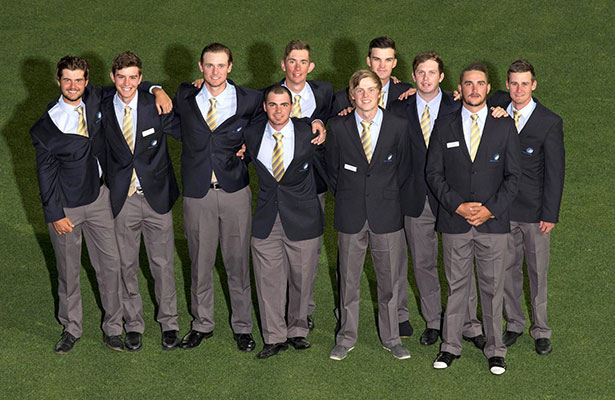
Why do they fail?
SO WHY do some top amateurs fail to have any sort of professional success, while other less talented individuals go on to make it?
Much has to do with attitude according to Alex Mercer, the octogenarian teaching professional who has coached hundreds of state and national-level amateurs through his association with New South Wales, Australian and New Zealand golf.
“I’ve seen some incredible talent where nothing has really fired. And I’ve seen other guys that I thought were good, but they’ve actually come out better than I thought they would,” says Mercer who had a profound influence on the careers of four Major winners – David Graham, Jan Stephenson, Steve Elkington and Michael Campbell.
“A lot of it is in their personality of being able to compete at a certain level. When they look at the field they’re competing against, that builds extra pressure straight away.
“Self belief; some think, If I have to be so full of belief in myself as that, and if I have to work as hard as that and be as hungry as that, somewhere along the line it doesn’t seemworth it. They get to a level where they think, It’s not going to work for me.”
Nick O’Hern was a golfer who didn’t seem to have what it takes in his youth, but developed a great competitive attitude. O’Hern willed himself onto the US PGA Tour, defeated Tiger Woods in match play at the height of his powers and made two appearances at the Presidents Cup (2005 and 2007).
Two-time Australian Open champion Greg Chalmers is another that comes to mind. Mercer says Chalmers was always a very good player, but he achieved marvellously well through having a good temperament and a brilliant short game.
“If your short game isn’t absolutely outstanding, you can’t compete at the top level,” says Mercer. “It’s very hard when some people learn as youngsters all about a great golf swing – and all about the technical part of the swing – and somewhere along the line it hasn’t occurred to them that it’s only a small part of it.
“The knack of putting it together and making a score is more of a mental thing – being resilient and able to play a bad hole and still scramble somehow or other to make a par.
“I don’t think you can write about that. I’ve seen too much of it to think there’s any one secret. But it gets back to the person’s makeup; their metabolism or whatever makes them tick. Some people can find that extra bit in a crisis where they can just get their way out of it.”
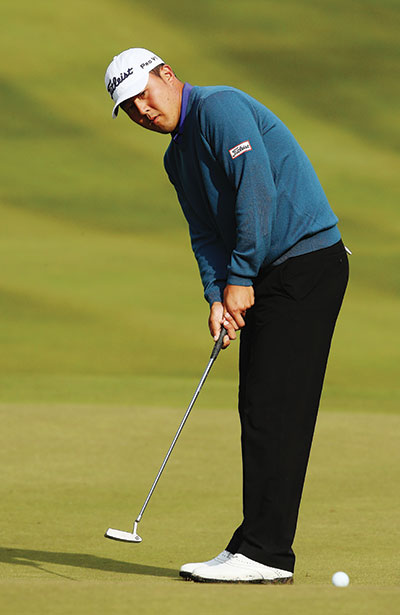
One of the best ballstrikers and swings Mercer ever saw for a teenager belonged to Jason King, who now teaches at Moore Park Driving Range in Sydney. Having seen Elkington through the same age grow into a Major champion, Mercer says there wasn’t much difference between the pair in raw talent or technical ability. “Steve was just so single-minded about what he was going to do.”
Another tremendous talent was Wayne Stewart, who looked like he would become a world-beater in the early 1990s. Rumours and innuendo surrounded Stewart’s playing career. He was last heard to be managing a hotel in Albany, Western Australia.
“He was a very close friend of mine and a great kid,” says Mercer. “He was a brilliant player but other things intervened and got in his way. Then eventually it passed him by because he was fighting against other things off the golf course.
“For some of them, their life off the golf course doesn’t allow them to apply themself completely to their game. At an age when some of these guys have reached this level where they could be something, they find it difficult to get the percentage right – how much social life they can have and how much work they have to do on their golf.”
Off-course distractions – sex, gambling and drugs – have destroyed many careers. Most commonly it’s the booze, with too many unable to control their alcohol intake.
Another reason that drives top players out of the game is the yips. David Feherty, Johnny Miller, Brett Ogle and Ian Baker-Finch all suffered from the mental demons. But you rarely hear about the up-and-coming players that succumb to the yips before their career has even got going.
For many aspiring professionals, injury curtails a promising career. Brett Partridge, a member of Australia’s successful Eisenhower Trophy winning side in 1996, was a late-bloomer. He turned pro immediately after that victory at the age of 25 and was Rookie of the Year in his first season on the PGA Tour of Australasia.
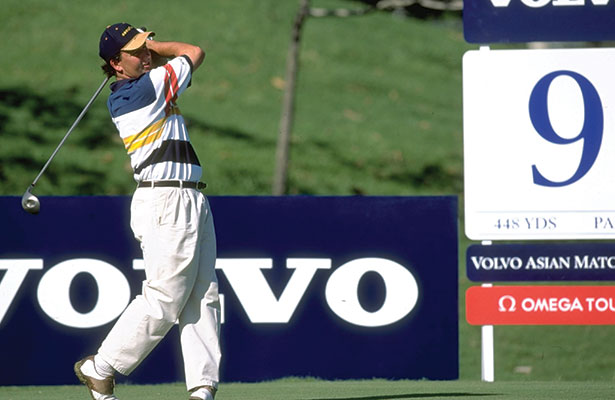
However the Tasmanian tore the cartilage off his wrist while playing the final of the 1997 Volvo Asian Match Play, an invitational tournament held in the Philippines. He was never the same – unable to take time off to fully heal and recover. He battled on until 2000 when he was forced to retire after tearing the same cartilage at the New Zealand Open.
Partridge continued his association with the game, working at Barnbougle Dunes as golf operations manager for 11 years. He often speaks to young amateurs, giving them advice about the challenges of turning pro.
“It’s totally different to what people get the perception of what it is, especially money-wise. Of your career earnings, you don’t take that home. That’s one of the hard things. I think my career earnings were half a million over five years. But when you took all your expenses out of that, you’re probably only making $50,000 a year over those five years that I was out there playing on the tour.
“And if you don’t play any good, you don’t get paid. That’s the simple fact. You can’t keep missing cuts because you run out of money and then you’re buggered.”
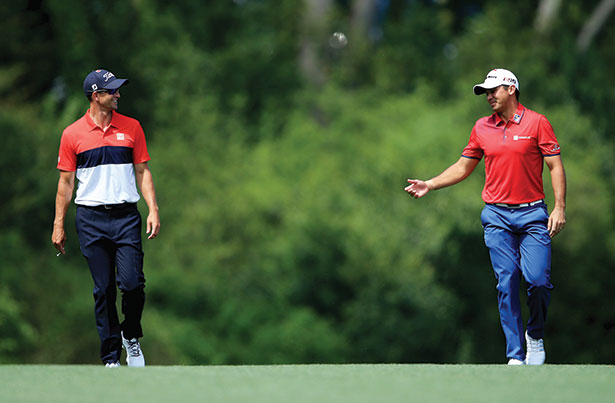
The Scorecard Doesn’t Lie
ALL sorts of excuses can be made for why a player didn’t make it as a pro. But it’s certainly not because they got sick of the travel or spending too much time away from home as some former players would have you believe. Who gets sick of flying up the pointy end of an aeroplane? Who gets sick of being picked up by limousine drivers? Or staying in luxurious suites at the best hotels?
What professional golfers get sick of is a lack of success, says Australian Golf Digest columnist Grant Dodd. They get tired of flying economy. They get tired of catching buses to and from the course. They get tired of missing cuts. And they get tired of looking at their bank balance go down by $5,000 a week when they miss a cut.
The reality is that players don’t make it because they weren’t good enough. Ultimately, in golf, the scorecard doesn’t lie.
“You generally have a mental deficiency,” says Dodd. “Your inability to execute under pressure or your inability to deal with distractions. They’re the things that no one wants to admit, because they’re like looking in the mirror of life. Nothing exposes your frailties like professional golf.”
Probably the most disparaging word in golf is ‘Choke’. Not far behind is use of the term, ‘Failed touring pro’. Really, there is no such thing. Anybody with the ability and aspiration to give it a go should be admired for their courage.
Missing the cut in professional golf is simply failing to perpetuate your career. It’s about having to give the game away because you couldn’t make enough money to sustain yourself.
The whole essence of being a pro golfer is to, firstly, make enough money to get out on tour and then make enough money to provide for your family. And when you can’t do that, you become a bit player in a secondary tour.
Not everybody can be an Allenby, an Appleby, a Scott or a Day.
